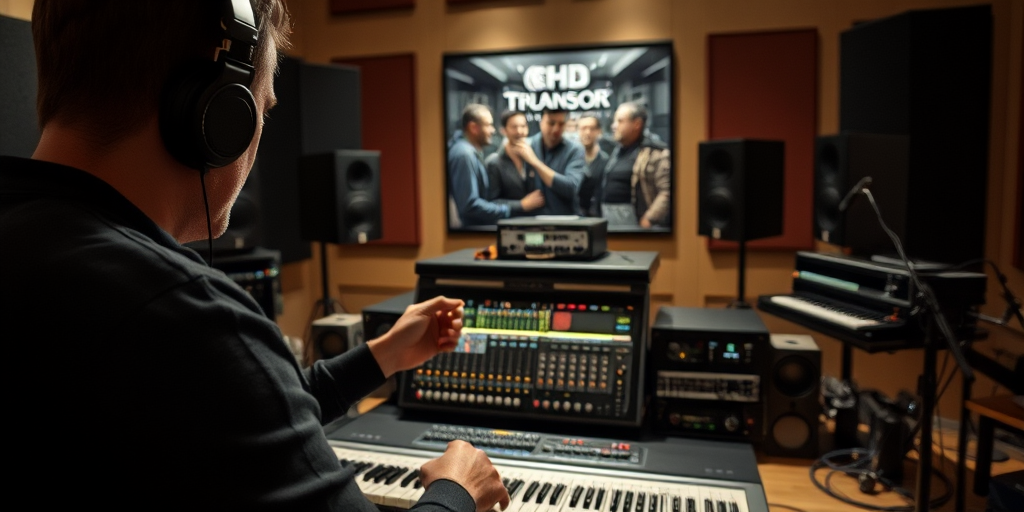Ever wonder why some practice session recordings capture every note flawlessly while others fall flat? We’ve discovered that the secret lies in meticulous planning and using the right tools. In our journey, we’ve embraced the power of organized folder systems, pre-loaded recording templates, and technical tips that transform chaotic sessions into dynamic masterpieces. This article equips you with actionable insights to streamline your setup, boost efficiency, and ultimately record practice sessions that truly rock—helping us all elevate our musical expressions to new heights.
Essential Tools & Equipment for Recording a Practice Session: Tools & Tips

Selecting the right audio gear is crucial for capturing both instrumental and vocal clarity during a practice session. When we choose the proper equipment, we ensure that every nuance of our performance is preserved, allowing the rich harmonies and dynamic expressions of gospel quartet music to shine through. A well-chosen setup not only improves our recording quality but also minimizes post-production efforts by delivering cleaner, more reliable audio data. From basic setups like smartphones and DSLRs to advanced digital interfaces, making informed decisions about our equipment is key to achieving a professional sound that supports our musical expression and spiritual mission.
To further enhance our recording experience, we must consider a range of tools that cater to various budget needs without compromising quality. Below is a curated list of recommended equipment items that serve as the backbone of any effective recording session:
- Quality microphone with proper placement capabilities
- Digital recorder or smartphone with high resolution
- Audio interface for signal clarity
- Headphones for real-time monitoring
- Cost-effective production software
This selection empowers us to optimize performance documentation and create high-impact sessions. By integrating both cost-effective and advanced gear, we can maintain a versatile setup that adapts to different recording environments while keeping our workflow streamlined and focused on uplifting our community through music and faith.
Recording a Practice Session: Tools & Tips Rock
We embrace self-review as an essential step in refining our art. Recorded sessions offer us immediate playback for careful listening, allowing us to detect subtle details and balance our mix with precision. This self-evaluation process transforms routine practice into a powerful tool for spiritual and musical growth.
Employing structured analysis, we benefit from a set of clear guidelines that ensure each session is critically examined. By consistently referring to a checklist, we identify strengths and pinpoint areas for improvement. This methodical approach includes monitoring technical adjustments such as compression between 4 and 8 dB and leveraging parallel reverb settings to maintain clarity. Here are some methods for effective self-assessment:
- Listen for clarity and balance in each recording
- Collect feedback using digital review tools
- Compare successive recordings to track improvements
- Adjust techniques based on identified weak areas
Using recordings for progress tracking provides us with tangible benchmarks. The ability to compare historical sessions with current ones not only highlights our evolution but also reinforces our commitment to excellence. Continuous monitoring of our progress encourages us to refine both our technical and creative practices, propelling our journey of faith and music forward.
Final Words
In the action, we highlighted planning, gear selection, step-by-step setup, self-assessment, and troubleshooting.
We examined how organizing folders, using pre-loaded templates, and following technical steps ensure efficient recording sessions.
Our discussion also emphasized critical listening and structured feedback for continuous improvement.
Each section reinforces the practical use of Recording a Practice Session: Tools & Tips to optimize workflow and foster growth.
We are encouraged by the opportunity to simplify complex processes and celebrate progress every step of the way.
FAQ
Q: What are the essential tools needed for recording practice sessions?
A: The core tools include a quality microphone, digital audio interface, headphones for monitoring, and recording software. For beginners, a smartphone with a good microphone can serve as an entry point.
Q: How should I organize my recording files and folders?
A: Create a main session folder with clearly labeled sub-folders for different recording dates. Use consistent naming conventions and keep templates readily accessible for quick setup.
Q: What’s the ideal setup process for recording practice?
A: Start by preparing your space, setting up microphones at proper angles, checking audio levels, and loading your recording template. Ensure all connections are secure before beginning.
Q: How can I improve the quality of my practice recordings?
A: Focus on proper microphone placement, maintain consistent input levels around -12dB, use acoustic treatment where possible, and monitor your recordings with quality headphones.
Q: What are common recording issues and their solutions?
A: Audio clipping can be fixed by reducing input gain, background noise eliminated with proper room treatment, and file management issues solved through organized folder structures.
Q: How often should I record my practice sessions?
A: Record practice sessions at least weekly to track progress effectively. This frequency provides enough data to identify patterns and areas for improvement.
Q: What’s the best way to analyze practice recordings?
A: Listen for specific elements like timing, pitch, and clarity. Compare recordings from different sessions to track improvements and identify areas needing attention.
Q: How can I make my recording workflow more efficient?
A: Use templates, maintain organized folders, keep equipment ready to record, and develop a consistent backup system for your files.
